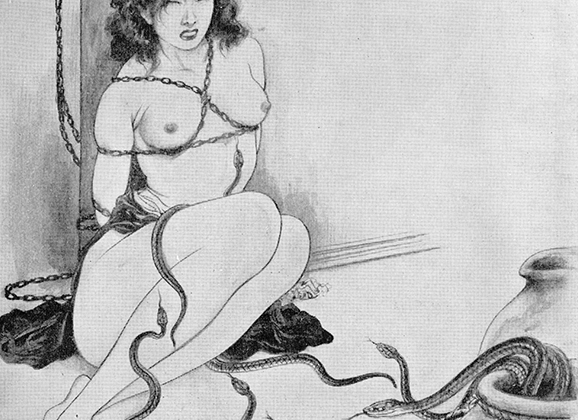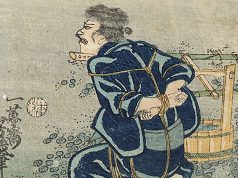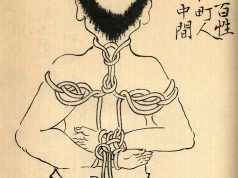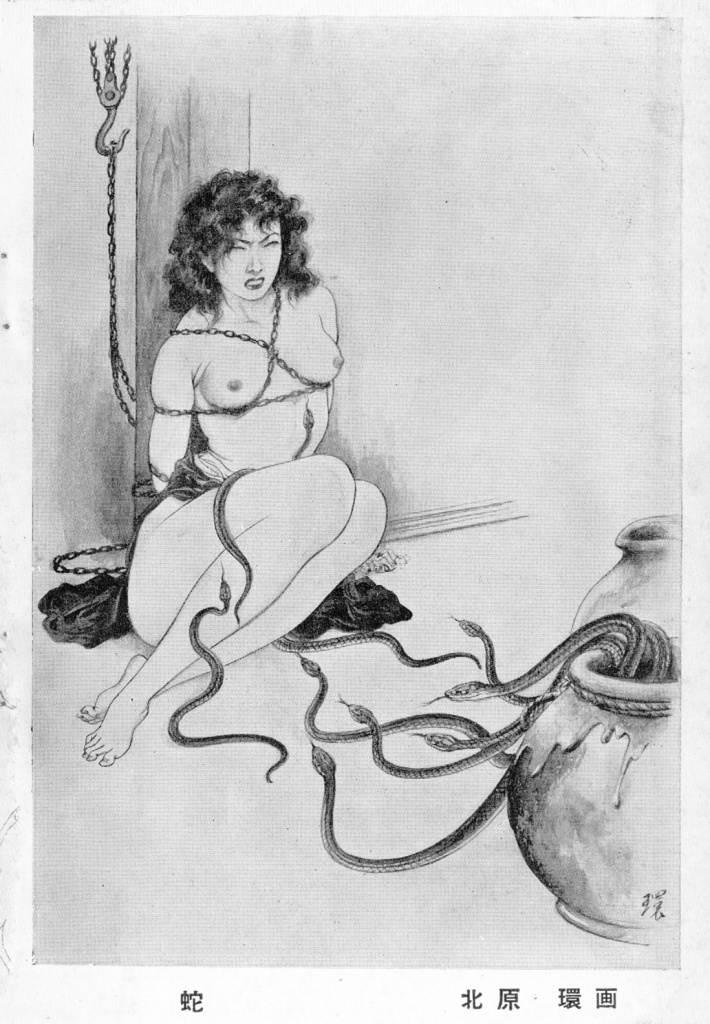
It is often interesting to compare artist’s visions between the west and Japan. In this case, a common theme emerges in a drawing from Japan, simply titled “蛇” (Hebi or “snake”). The first image was drawn by 北原環 (Kitahara Tamaki) and published in 1954 in Fuzoku Soshi. While snakes have a variety of meanings in Japanese culture, they hold a special place in the history of Japanese SM, based largely on the fame of Oniroku Dan’s story Flower and Snake which is one of the most popular stories in SM fiction, with the obvious metaphors to female and male genitalia (the flower and the snake). Dan’s story was published a decade after this image and these snakes seem to simply be part of a torture designed as punishment.
Kitahara, according to SMPedia, worked mainly as an artist drawing commissions for those interested in SM and rope bondage. His work appeared in Uramado and Fuzoku Soshi in the early 1950s, perhaps due to his friendship or connection to Minomura Kou.
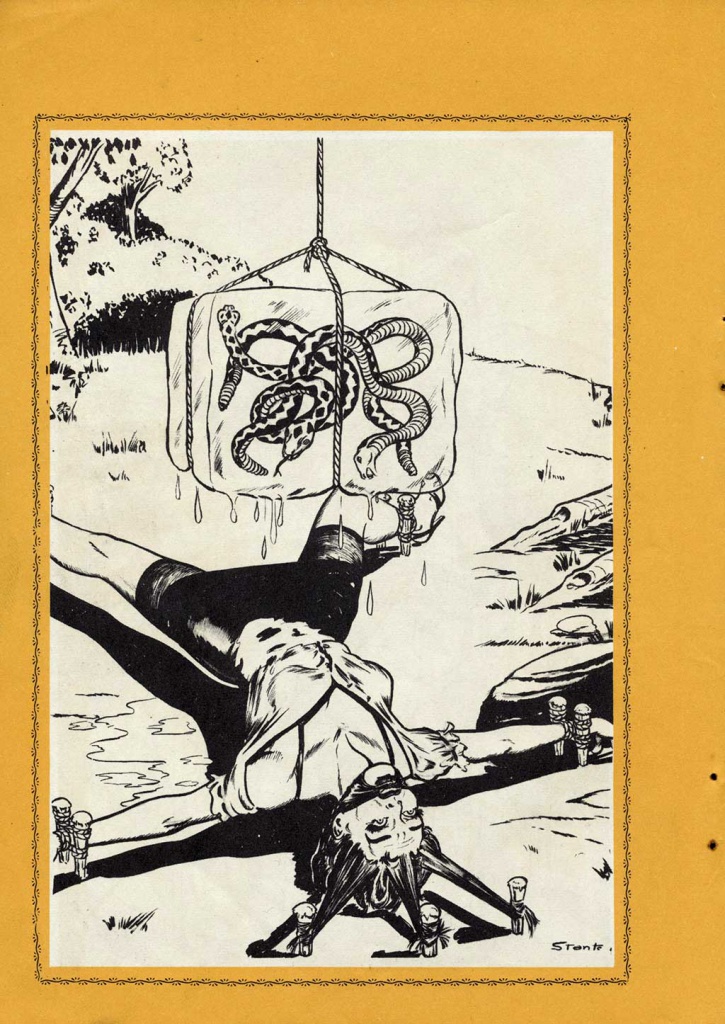 The second drawing by Eric Stanton, poses a similar setting of a helpless woman in peril, about to be accosted by snakes. In this case, it is a matter of waiting for the ice to melt and for the snakes to be released. Originally published by Irving Klaw, republished in Bizarre Comix Volume 9, sometime between 1951 and 1952, putting it roughly contemporary with the Kitahara drawing.
The second drawing by Eric Stanton, poses a similar setting of a helpless woman in peril, about to be accosted by snakes. In this case, it is a matter of waiting for the ice to melt and for the snakes to be released. Originally published by Irving Klaw, republished in Bizarre Comix Volume 9, sometime between 1951 and 1952, putting it roughly contemporary with the Kitahara drawing.
In the republished version (as part of the comic, Bizarre Museum), editors have added a story line, “Count Bizarre describes in his memoirs the ancient east Indian method of staking a victim to the ground and suspending by rope, a slowly melting cake of ice, encasing several live venomous snakes!”
This image is not only interesting for its parallels to the earlier Kitahara drawing, but because it was also published in an edition of the Japanese magazine Uramado while it was edited by Nureki in the early 1960s as well.
In both cases, we can see an interesting glimpse into the imaginations of two artists, from different traditions, working at roughly the same time, addressing and bringing to life a similar form of torture: hebizeme or “snake torment”!

